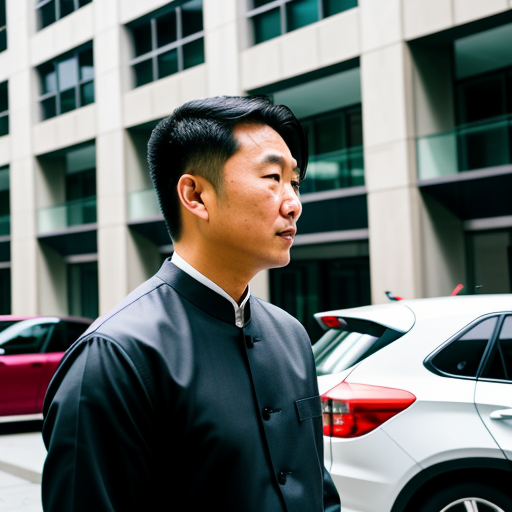On a rainy day, Mr. Wang lost control of his minibus causing it to overturn and collide with Mr. Liu, who was busy covering his truck with a rain tarp. This resulted in injuries to Mr. Liu. After failing to reach a settlement regarding compensation, Mr. Liu brought the matter to the first-instance court.
Mr. Liu argued that, despite the traffic accident being confirmed by the police as an unforeseen incident, the injuries he sustained were directly caused by the rupture of the right rear tire of Mr. Wang’s minibus leading to the overturn and collision. Therefore, Mr. Wang should assume corresponding economic liability for the damages incurred due to Mr. Liu’s injuries.
Mr. Wang countered that the accident was indeed an unforeseen incident and that he bore no fault in its occurrence.
The first-instance court, after examining the case, held that in accidents happened between motor vehicles and non-motorized vehicles/pedestrians, the motor vehicle party assumes no-fault liability. Although the police concluded that both parties were faultless in this accidental occurrence, the causal relationship between Mr. Liu’s injuries and Mr. Wang’s vehicular impact was evident, and there was no evidence indicating that Mr. Liu was at fault. Consequently, the owner/driver, Mr. Wang, was ordered to bear full compensation responsibility.
Unsatisfied with the result, Mr. Wang appealed, but the second-instance court upheld the ruling of the first-instance court, which applied the principle of no-fault liability.
Case analysis:
Article 1165 of the Civil Code of the PRC provides: Where a person causes harm to another’s civil rights due to a wrongful act, they shall bear tortious liability. This embodies the general principle of liability in civil torts: the principle of fault.
In contrast, the principle of no-fault liability dictates that under specific circumstances stipulated by law, a person who has not acted wrongfully shall still bear civil liability based on the resulting harm. The conditions for applying this principle are:
(1) a clearly defined scope of application by law;
(2) disregard of the subjective fault of the infringing party;
(3) existence of statutory exemptions; and
(4) presence of causality.

Then, why was the principle of no-fault liability applied in this case?
Firstly, for non-motorized vehicles and pedestrians, motor vehicles represent high-speed moving tools that inherently carry a significantly higher risk factor. Thus, drivers of motor vehicles should be held to a heightened standard of cautious driving and safety awareness.
Secondly, according to the theory of benefit-based liability, i.e., ‘whoever enjoys the benefits bears the risks’, the owner of a vehicle, as the beneficiary of its operation, should naturally assume the risks associated with it, beneficiaries must pay the price for their gains, ensuring that those pursuing their interests simultaneously shoulder the risks inherent to those gains.
This aligns with economic rationality and the principles of fairness and reasonableness in civil law. Otherwise, it would be egregiously unfair if a pedestrian, who is faultless, were to bear the risks stemming from the actions of a motor vehicle operator. Modern legal systems typically prioritize protecting the weaker party in conflicts between two rights holders.
Generally, the provisions of the Tort Liability Chapter in the Civil Code show that the principle of no-fault liability mainly applies to the following scenarios: * liability of guardians for harm caused by minors under their supervision;
* employer liability for harm caused by employees;
* producer liability for product defects resulting in harm;
* motor vehicle owners’ liability for harm caused to non-motorized vehicles or pedestrians in traffic accidents;
* liability for environmental pollution and ecological damage causing harm;
* liability for harm caused by high-risk activities or facilities;
*and liability for harm caused by non-zoo kept animals.
Now, do you understand why the principle of no-fault liability was applied in this case?

